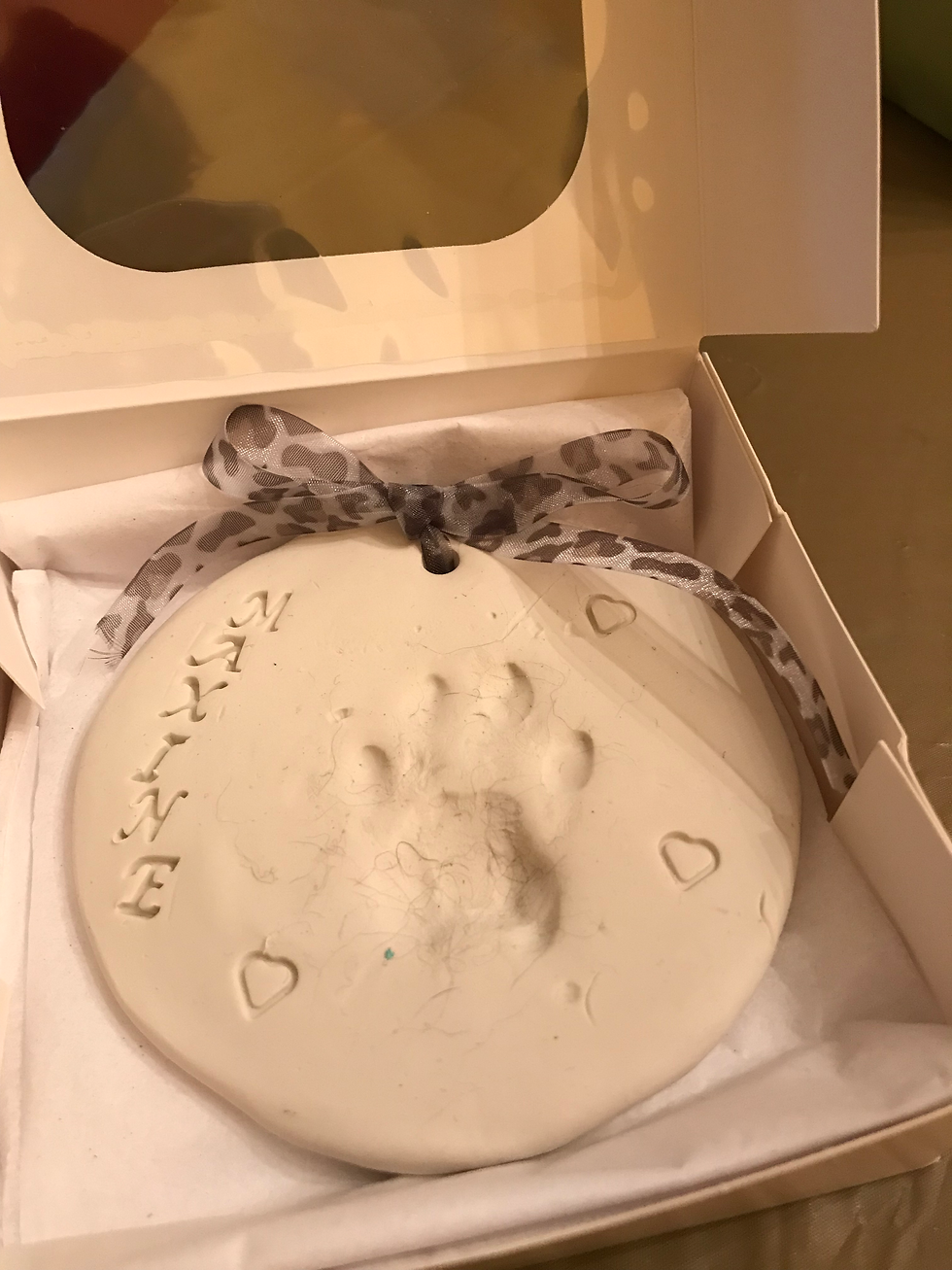
Letting Go of Max: Grief in Everyday Moments
- Eunice Curry
- Aug 19
- 3 min read
Today, while cleaning out my laundry room, I came face-to-face with something I’d been avoiding for years: a small gift bag holding the last of my cat Max’s things. Inside were reminders of her final days—half a bag of food, the IV, needles, pet soap, and salmon oil. For a long time, I tucked the bag away, telling myself I’d deal with it later. Today, I finally did. I opened it, looked at each item, and let them go. And with that simple act, I realized it was time.
Max—short for Maxine Curry—was with me for 13 years. In late 2017, I began to notice subtle changes. Her collar hung loosely, her coat looked dull, and something about her felt different. The vet told me she might have urinary tract issues and suggested a new diet, close monitoring of her weight, and hydration.

Within weeks, though, her health declined sharply. She grew frail, her sight seemed in to dim, and her once-graceful movements carried the weight of struggle. She still followed me from room to room, doing her best to be her usual loving self, curling at my feet. But I could see she was fading.

I returned to the vet, and the vet gently urged me to consider her quality of life. I wasn’t ready—not that day. I brought her home with medication and IV fluids, trying to hold on a little longer. After several anxious days, I knew what I had to do. I sat with Max, stroking her fur, whispering that she had done everything she came here to do, that she was loved, and that I would miss her deeply.
Finally, I made the painful call to the vet and brought her back one last time. Letting her go was one of the hardest things I have ever done. I remember sobbing in the car afterward, heartbroken but also profoundly aware that love sometimes means release.

Even as I write this, it still hurts. But I share this story not only to honor Max, but to show how grief weaves itself into our everyday lives—in the things we keep, the things we avoid, and the moments we finally face what we’ve been holding back.

As a grief counselor, I know that the loss of a pet is not “just” the loss of an animal. Pets are family, companions, confidants, and in many ways, children. Their absence leaves an ache that others may not always understand—but it is real, valid, and profound.

Navigating Pet Loss: Gentle Tips for the Journey
If you’re grieving a beloved pet, here are a few practices that may help:
Allow yourself to feel – Grief doesn’t need to be justified. It’s okay if others don’t understand the depth of your bond. Your grief is real.
Create a ritual of remembrance – Write a letter, light a candle, or frame a photo. Rituals can help transform pain into honor.
Don’t rush letting go of belongings – Whether it’s weeks or years later, you’ll know when the time feels right.
Talk about your pet – Share stories, memories, and the joy they brought. Speaking their name keeps their presence alive.
Give yourself compassion – Healing takes time, and grief isn’t linear. Some days will hurt more than others, and that’s okay.
Today, in finally letting go of Max’s things, I didn’t let go of her love, her companionship, or the joy she brought me. I simply created space to carry her memory differently—less in the objects she left behind, and more in the love she left with me.
Because grief, in all its forms, teaches us this: love never disappears. It just changes shape.





Comments